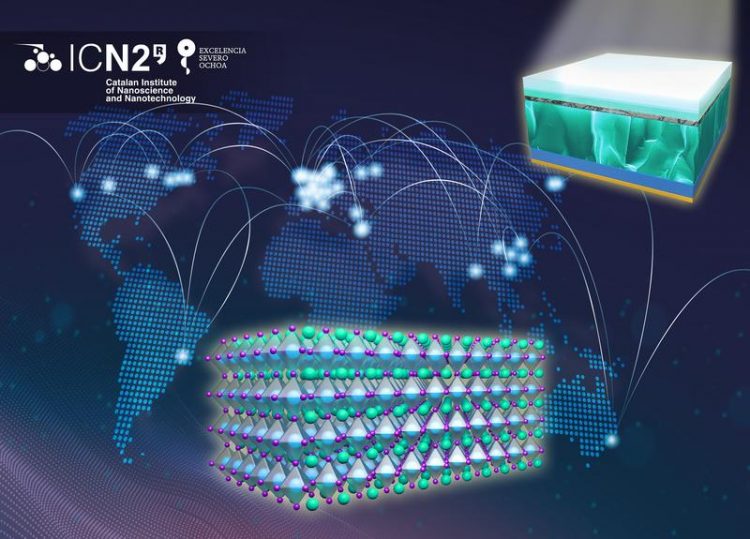Perovskite solar cells: International consensus on ageing measurement protocols

© Catalan Institute of Nanoscience and Nanotechnology
Commercially available solar modules undergo a series of characterisation procedures that analyse their properties and ensure quality. However, these methods cannot simply be transferred to halide perovskite solar cells.
Halide perovskites are hybrid inorganic-organic materials for a new generation of solar cells, which have only been investigated for about eleven years.
Perovskite solar cells achieve very high efficiencies and can be processed very cost-effectively from solution as extremely thin layers. However, perovskite-based solar cells are not yet stable enough to be commercialised.
Consensus on protocols
Now, international experts from 51 research institutes under the leadership of Prof. Mónica Lira-Cantú (Institut Catala de Nanosciencia i Nanotechnologia) and Prof. Eugene A. Katz (Ben-Gurion University of the Negev) have agreed on the ageing protocols suitable for this class of materials.
From the Helmholtz-Zentrum Berlin, Prof. Antonio Abate and his PhD student Hans Köbler were involved. The first author of the study, Dr. Mark Khenkin, is now also working as a postdoc at the HZB Institute PVcomB. Eugene Katz will soon complete a longer research stay at HZB. The consensus statement extends the ISOS protocols developed in 2011 for organic solar cells for the stability assessment of perovskite photovoltaics by further tests and parameters.
The test procedures are tailored to the specific characteristics of perovskite solar cells and can thus also map their special properties.
Step forward to industrialisation
In particular, the consensus allows for better comparability of ageing data between international laboratories and thus promotes meaningful analyses of degradation processes that affect stability. A checklist for reporting the results should further improve reproducibility.
This is a major milestone on the way from the laboratory to industry, writes Nature Energy in an editorial to the publication, which has now even been highlighted by the European Commission.
The consensus statement is published in Nature Energy 2020: “Consensus statement for stability assessment and reporting for perovskite photovoltaics based on ISOS procedures”.
Dr. Antonio Abate
E-Mail: antonio.abate@helmholtz-berlin.de
https://www.helmholtz-berlin.de/hzbin/doi.org/10.1038/s41560-019-0529-5
https://www.helmholtz-berlin.de/hzbin/news_seite?nid=21023;sprache=en;seitenid=9…
https://www.nature.com/articles/s41560-020-0552-6
Media Contact
All latest news from the category: Power and Electrical Engineering
This topic covers issues related to energy generation, conversion, transportation and consumption and how the industry is addressing the challenge of energy efficiency in general.
innovations-report provides in-depth and informative reports and articles on subjects ranging from wind energy, fuel cell technology, solar energy, geothermal energy, petroleum, gas, nuclear engineering, alternative energy and energy efficiency to fusion, hydrogen and superconductor technologies.
Newest articles

A ‘language’ for ML models to predict nanopore properties
A large number of 2D materials like graphene can have nanopores – small holes formed by missing atoms through which foreign substances can pass. The properties of these nanopores dictate many…

Clinically validated, wearable ultrasound patch
… for continuous blood pressure monitoring. A team of researchers at the University of California San Diego has developed a new and improved wearable ultrasound patch for continuous and noninvasive…

A new puzzle piece for string theory research
Dr. Ksenia Fedosova from the Cluster of Excellence Mathematics Münster, along with an international research team, has proven a conjecture in string theory that physicists had proposed regarding certain equations….



